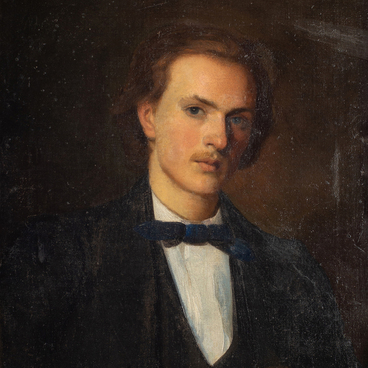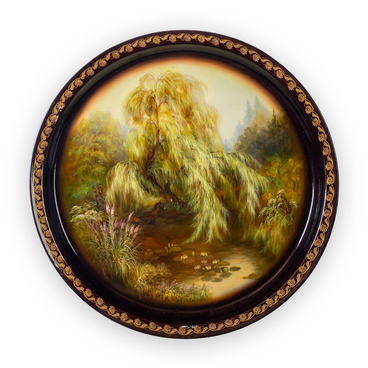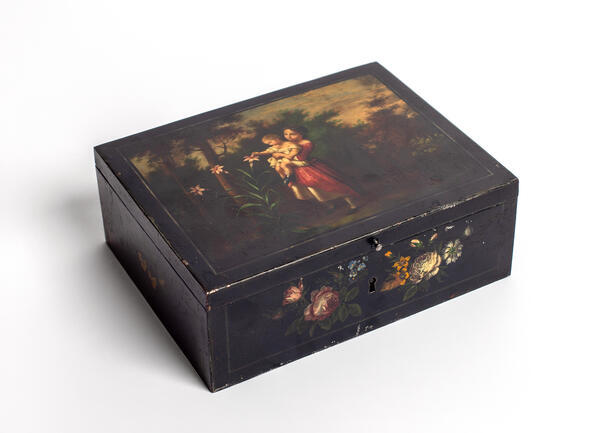Jewelry box with floral painting
Время создания
the 1830s–1840s
Место создания
Nizhny Tagil, the Russian Empire
Размер
23x29x15 cm
Техника
metal, oil, lacquer; painting, forging
#1
This jewelry box with flowers was created by Isaak Fyodorovich Khudoyarov (1807–1879), a Nizhny Tagil master of lacquer painting on metal. This is a vivid example of traditional miniature painting. In the first half of the 19th century, this style was considered a different direction compared with folk brush painting. At the same time, both styles developed and enriched each other.
Flowers were a popular motif in the art of Isaak Khudoyarov. He preferred to paint them against a dark green or black background. He meticulously detailed every part of each flower, creating soft color transitions. According to his descendants, Isaak Khudoyarov had a garden and a flower bed in the backyard of his house on Beregovaya Street (later Gorky Street).
Isaak Khudoyarov was a passionate gardener. He grew rare flowers which served as a source of inspiration for him. On the lid and walls of this box from the museum collection, he depicted bouquets of flowers and leaves of various shapes and sizes. His composition is characterized by verisimilitude and attention to detail.
All the flower arrangements on this jewelry box are aligned with the center line. The beautiful painting is distinguished by delicate brushstrokes, pure colors, and balanced harmony. The soft shape transitions evoke associations with the Old Believer icon painting.
The box was covered with the famous “Khudoyarov crystal lacquer” which received its name due to its transparency and purity. Nikita Savvich Popov, a Russian writer, economist, historian, and geographer, was one of the first to mention the “crystal lacquer” and provide information about its inventor in his 1804 work “Economic Description of the Perm Governorate”.
Nikita Popov indicated that the lacquer was first produced at the Demidov factory in Nizhny Tagil and added,
#7
The craftsman Khudoyarov invented the composition of the Nizhny Tagil lacquer.” The writer also noted that only a small number of people knew the secret lacquer recipe, “The lacquer composition is known only to one or two houses of the inventor’s relatives. They make sure to guard their secret from outsiders, fearing that the value of this lacquer masterpiece would be diminished should it be shared with and become known to others.
#6
Ministry of Culture of the Russian Federation
читать дальшескрыть
00:00
00:00
1x
Jewelry box with floral painting
Время создания
the 1830s–1840s
Место создания
Nizhny Tagil, the Russian Empire
Размер
23x29x15 cm
Техника
metal, oil, lacquer; painting, forging
Открыть в приложении
Поделиться




